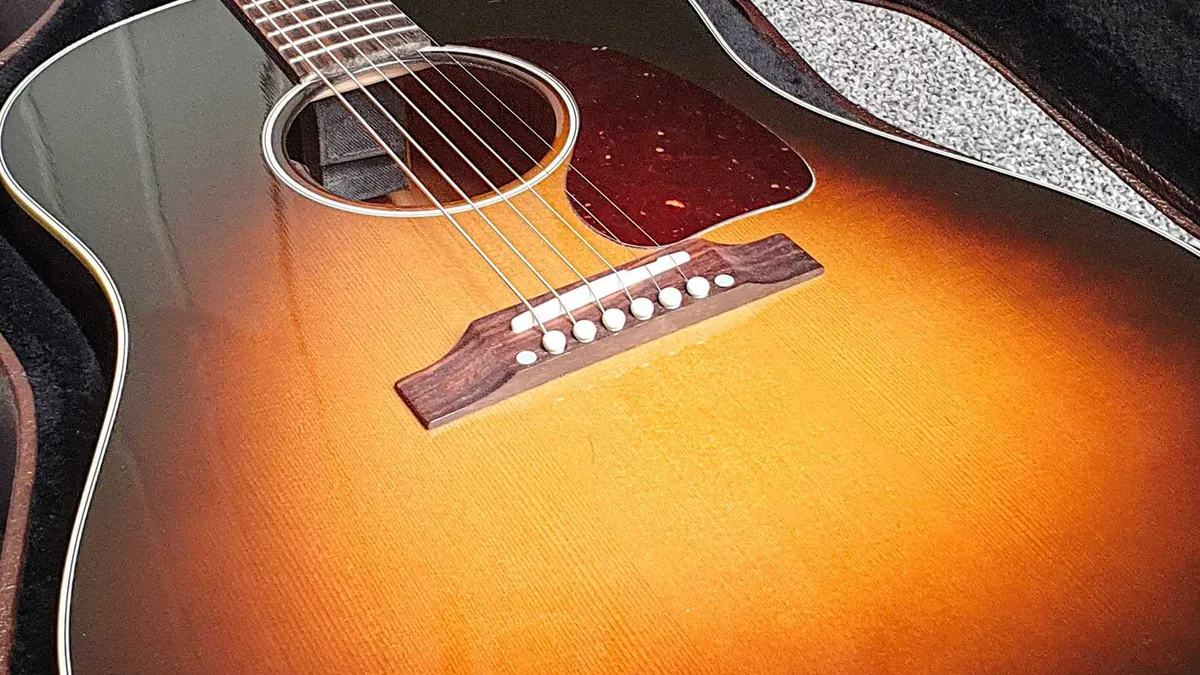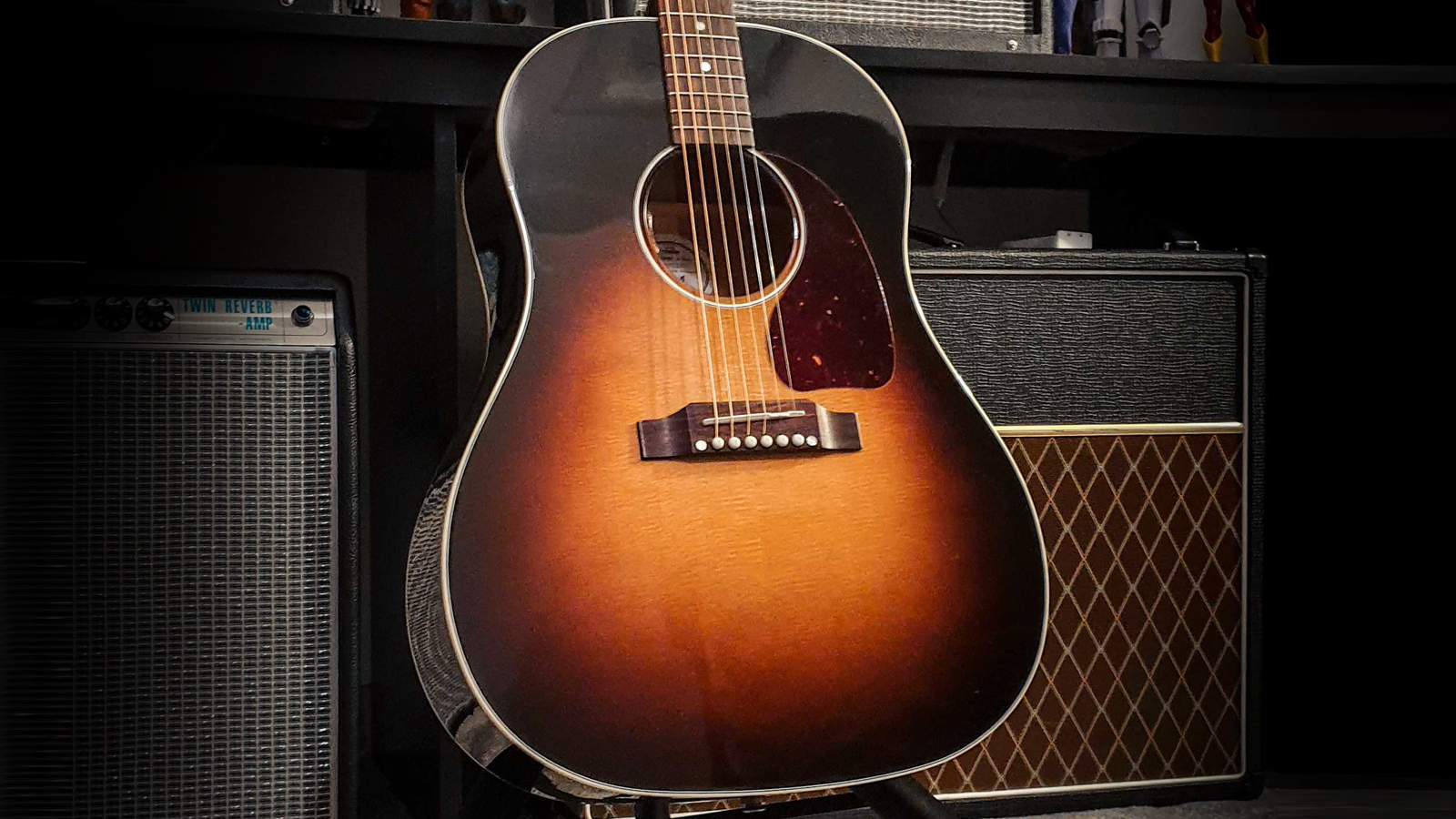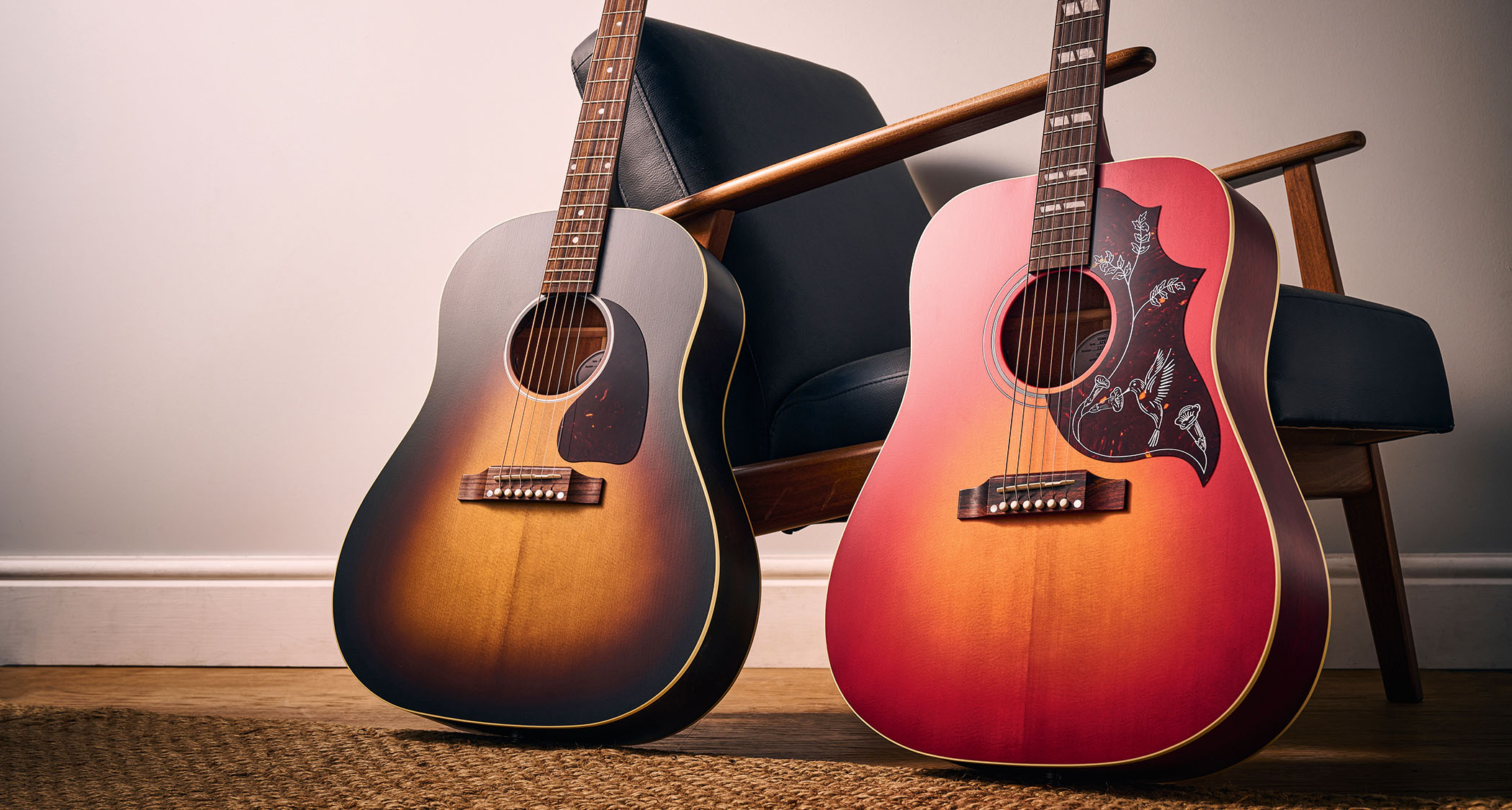Guitar World Verdict
There is a lot to love about Gibson's iconic J-45, and this modern version certainly lives up to the history that surrounds this legend of the acoustic world. With effortless playability, charming good looks, and a distinctive sound that is instantly recognizable, it's no wonder that the J-45 is still going strong over 80 years after it was first introduced.
Pros
- +
Stunning tone and looks
- +
Very playable
- +
LR Baggs VTC pickup
Cons
- -
The finish is a little sticky to start with
- -
The price has skyrocketed in recent years
You can trust Guitar World
Solid, robust, and effortlessly cool, there are only a handful of acoustic guitars that are as iconic as the Gibson J-45. Whether it's being played by Bob Dylan, John Lennon, Slash, or Billie Joe Armstrong, this legendary round-shouldered dreadnought is instantly recognizable. The "workhorse" model was introduced way back in 1942, and while it has gone through a few minor tweaks and revisions over the years, for the most part, it has remained relatively unchanged.
The solid mahogany back and sides and a solid Sitka spruce top deliver the famed tight, low-end, and laser-focused mid-range that the J-45 is known for, creating a timeless tone that transcends generations and musical genres. Of course, the body is then wrapped in the now historic sunburst finish, making it unmistakably a J-45.
This contemporary iteration also features a mahogany neck with a comfortable slim taper profile, rosewood fingerboard, and compound dovetail neck joint. Rounding out the spec sheet is the renowned LR Baggs VTC acoustic pickup system, which turns this beloved studio acoustic into a reliable stage companion.
Build quality and design

Despite being offered in no less than ten different finish options via a slew of Gibson.com exclusives, ranging from Cherry and Wine Red to Honey and Blueberry Burst, for me, there is only one colorway that does the J-45's elegant silhouette justice: Vintage Sunburst. Thankfully, that's precisely what I have here.
The vibrant orange hues of the 'burst finish are only enhanced by the lustrous shine of the nitrocellulose lacquer that covers the entire instrument. This acoustic is simply gorgeous. Looking past the finish, underneath is a solid Sitka spruce with a remarkably straight, pinstripe grain pattern that emphasizes the quality of the wood used to construct this beautiful guitar.
Turning the guitar over, it's a little trickier to see the timber underneath the dark coloring of the back and sides. That said, a quick peek inside the soundhole reveals everything is as it should be. The rich, solid mahogany looks every bit as good as the spruce used for the top.
Ornamentation is fairly minimal on a J-45, with a relatively basic rosette, multi-ply binding, and tortoiseshell pickguard. Yes, the workhorse may be less ornate when compared to its flashier big brothers, the Hummingbird or Dove, but this understated look is all part of its timeless charm.
Thankfully, my review model has no defects or finishing flaws that would detract from its handsome, good looks – something that's not always the case with Gibson, even at this price point.
Playability

Moving on to playability, it's safe to say the J-45 Standard does not disappoint. Opting for the fairly standard slim taper profile found on many Gibson models, this acoustic feels familiar and inviting and is incredibly easy to maneuver and handle.
The neck here isn't too fat or too thin, and relatively even as I make my way towards the 12th fret. Of course, as expected, the J-45 sports the typical 24.75" scale length of other Gibson guitars, as well as 20 "standard" frets that are well polished and expertly installed.
Just like the body, the neck is finished in full nitro lacquer. Now, I did experience a slight "stickiness" to the back of the neck for a good while after receiving the guitar. This is an issue I've experienced a couple of times with brand-new Gibson instruments, and while it was slightly annoying, it did disappear after a few plays.
The J-45 is a round-shoulder dreadnought, and while it certainly isn't a small guitar, the body never felt intrusive or cumbersome. In fact, it's actually a very comfortable guitar to sit with. It's very lightweight, too. For me, the J-45 is just as comfortable as a sofa companion, as it is draped around my shoulder at an open mic.
Sound

Tonally, the J-45 produces a rather unique sound. Bold, characterful, and fiercely cutting, this classic Gibson sound is just as recognizable as its distinctive aesthetic. It goes without saying that this guitar is loud, but for me, the J-45's tone is more than simply bags of volume.
Yes, there is plenty of headroom in this acoustic, and no matter how hard I hit the strings with a pick, the top never compresses too much, resulting in an open sound that fills the room, but this acoustic's mid-range is its secret weapon. The earthy and woody mid-frequencies are what allow this guitar to sonically slice through even the densest of mixes, meaning you'll always be heard no matter what else is going on.
The lows are relatively tame, never sounding too boomy, while I found the high frequencies to be bright and almost modern in their sheen. Thanks to its traditional hand-scalloped X-bracing, each note rings out true and clear, with a piano-like percussive nature to single notes.
Turning my attention away from the acoustic tone, and I'm happy to report that the J-45 sounds just as good plugged in as it does au naturel. Tucked away out of sight is the LR Baggs VTC acoustic pickup system, and it does a valiant job of retaining the tonal character of the unplugged J-45. The guitar's power and sonic balance are represented incredibly well here, and without the scratchy top-end, you typically find with other under-saddle transducers.
Final verdict

There is a lot to love about Gibson's iconic J-45, and this modern version certainly lives up to the history that surrounds this legend of the acoustic world. With effortless playability, charming good looks, and a distinctive sound that is instantly recognizable, it's no wonder that the J-45 is still going strong over 80 years after it was first introduced.
Specifications

- Body Style: Round Shoulder Dreadnought
- Back & Sides: Solid Mahogany
- Top: Solid Sitka Spruce
- Bracing: Traditional Hand-Scalloped X-Bracing
- Body Finish: Gloss Nitrocellulose Lacquer
- Neck: Mahogany
- Profile: Slim Taper
- Fingerboard: Rosewood
- Tuning Machines: Grover Rotomatics
- Under Saddle Pickup: LR Baggs VTC
- Case: Hardshell Case
- Contact: Gibson

Daryl is a Senior Deals Writer at Guitar World, where he creates and maintains our 200+ buyer's guides, finds the best deals on guitar products, and tests the latest gear. His reviews have been featured in prominent publications like Total Guitar, Future Music magazine, and MusicRadar.com.
During his career, he has been lucky enough to talk to many of his musical heroes, having interviewed Slash and members of Sum 41, Foo Fighters, The Offspring, Feeder, Thrice, and more. In a past life, Daryl worked in music retail. For a little under a decade, he advised everyone from absolute beginners to seasoned pros on the right gear for their needs.
Daryl is also a fully qualified sound engineer, holding a first-class Bachelor's degree in Creative Sound Production from the University of Abertay.
“I liked that they were the underdogs. It was not the mainstream guitar. It was something that was hard to find”: Vox guitars deserve a second look – just ask L.A. Witch’s Sade Sanchez, who’s teaming hers with ugly pedals for nouveau garage rock thrills
“I suppose I felt that I deserved it for the amount of seriousness that I’d put into it. My head was huge!” “Clapton is God” graffiti made him a guitar legend when he was barely 20 – he says he was far from uncomfortable with the adulation at the time
“I was in a frenzy about it being trapped and burnt up. I knew I'd never be able to replace it”: After being pulled from the wreckage of a car crash, John Sykes ran back to his burning vehicle to save his beloved '76 Les Paul











